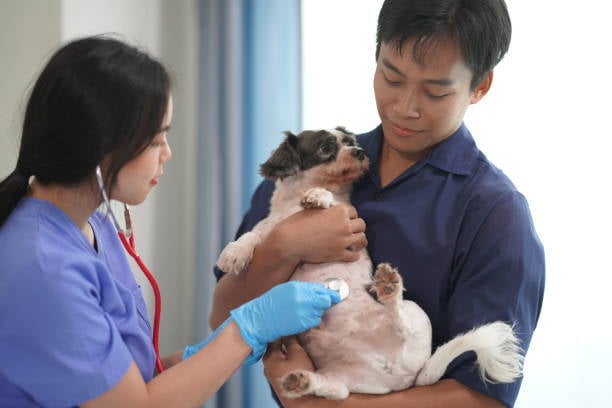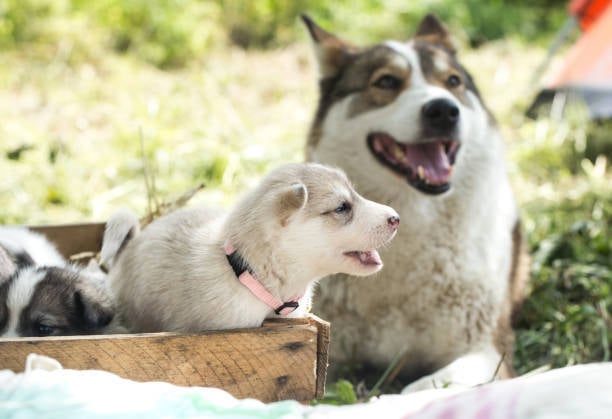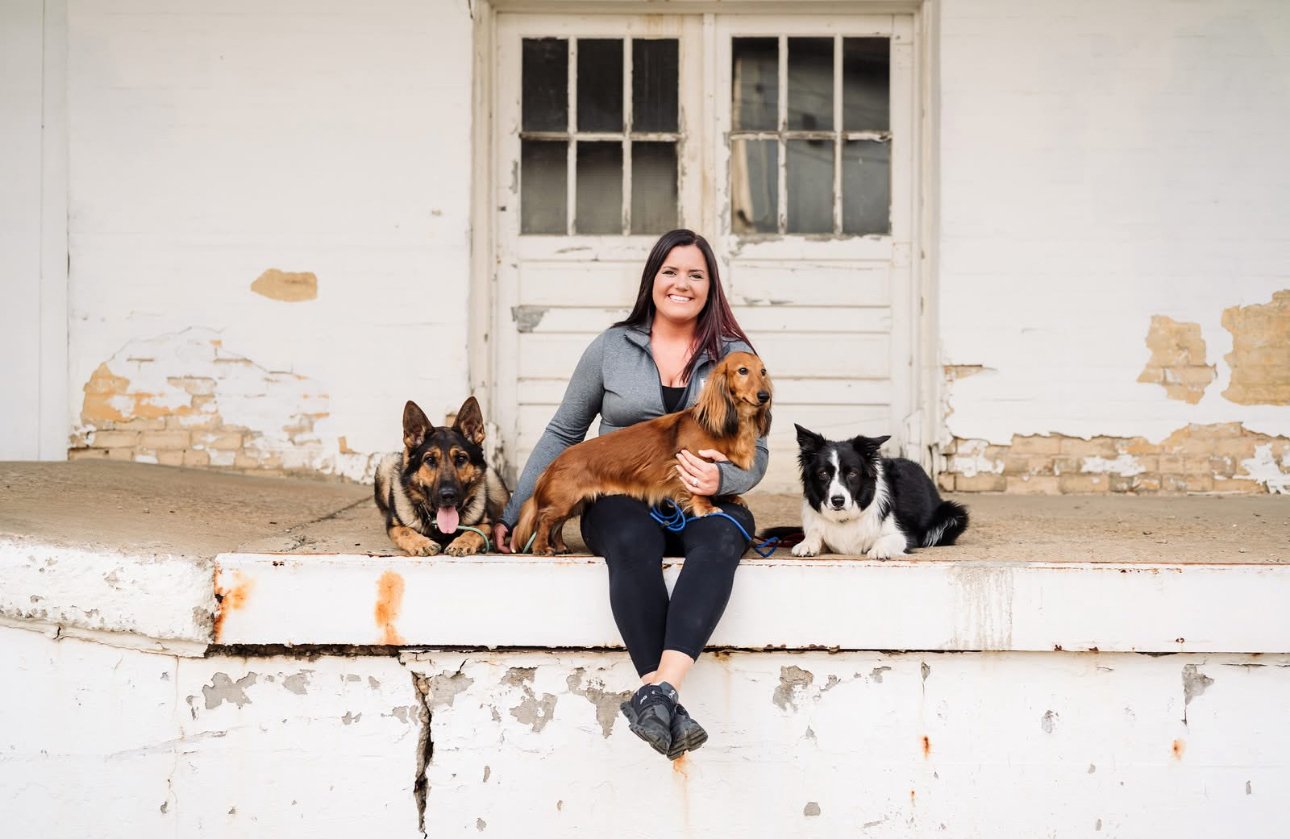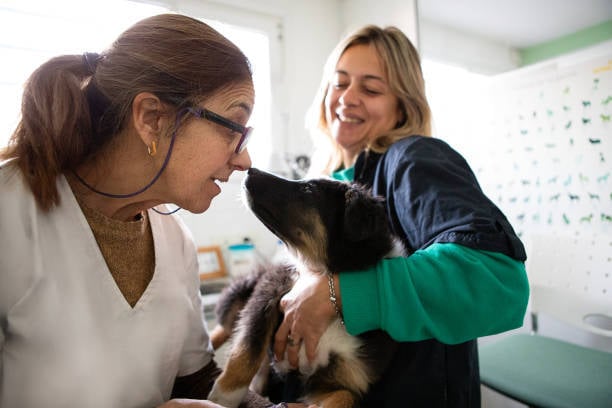Just as puppies outgrow their first harness and seniors slow their stride, a dog’s vaccination plan evolves with every life stage. Understanding when and why to vaccinate not only shields pets from life-threatening diseases, but it also satisfies daycare, boarding, grooming, and legal requirements. This guide walks you through core and lifestyle (non-core) vaccines from the first vet visit through the golden years — and shows how Gingr’s automated reminder system keeps everyone on schedule.
Why Vaccination Is a Lifelong Priority for Pups
Vaccines train the immune system to recognize and neutralize viruses and bacteria before they cause illness. The American Animal Hospital Association (AAHA) calls vaccination “a cornerstone of canine preventive healthcare,” noting that lapses in coverage contribute to resurging outbreaks of distemper and parvovirus across the United States.
Core vs. Non-Core: Decoding the Vaccine Menu
Core vaccines protect against widespread, severe, or legally regulated diseases: canine distemper virus (CDV), canine parvovirus (CPV-2), canine adenovirus-2 (CAV-2), and rabies.
Non-core vaccines (e.g., Bordetella, leptospirosis, Lyme, canine influenza) are given based on geography, lifestyle, and risk of exposure.
Core immunity is typically long-lasting, but non-core immunity can fade within a year—one reason annual wellness visits remain essential even for apparently healthy adults.

Life-Stage Vaccine Roadmap
1. Puppyhood (6–16 Weeks)
Your puppy’s immune system is a clean slate. Maternal antibodies decline around six weeks, creating a critical window for protection. A typical vaccine schedule may look like:

Why Multiple Boosters?
Early antibodies can “block” vaccines; spacing shots every 3–4 weeks guarantees at least one dose lands after maternal protection fades.
Gingr Tip for Pet-Care Facilities
Most daycares require proof of DHPP, rabies, and Bordetella before a puppy can romp with friends. Gingr flags missing records with a red shield icon and emails parents 30 days before expiration, so youngsters stay on track without staff chasing paperwork.
2. Young Adult (16 Weeks–2 Years)
A “one-year booster” of core shots (or DHPP + rabies if given separately) fortifies immunity established during puppyhood. Dogs entering obedience classes, travel, or group housing may also receive:
- Bordetella (intranasal or injectable) every 6–12 months
- Canine influenza (H3N2/H3N8) annual series in outbreak regions
- Leptospirosis annually, now “recommended for all dogs” by AAHA as cases rise nationwide.
3. Prime Adult (2–6 Years)
Many core vaccines shift to a three-year interval once adult immunity is documented, though state rabies laws may still mandate more frequent shots. Non-core vaccines remain annual because protection wanes quickly. Pet parents should discuss titer testing for DHPP if their vet offers it. Documented antibody levels can spare low-risk dogs extra boosters, according to the AAHA.
4. Senior Years (7 Years +)
Immune memory persists, but aging slows the response to new threats. The American Veterinary Medical Association (AVMA) notes seniors still require core vaccines, with schedules adjusted for chronic conditions and lifestyle. Some veterinarians substitute titer tests for DHPP and extend Bordetella intervals, while keeping rabies current as required by law.
Special Considerations
- Monitor kidney or liver disease
- Space vaccinations apart from major dental or surgical procedures to avoid overload.
- Discuss “comfort vaccines” (e.g., single-dose intranasal Bordetella) for pups who dislike injections.
Lifestyle & Regional Risk Factors
- Tick-heavy regions: Lyme and anaplasma vaccines reduce vector-borne disease; Gingr can tag region-specific requirements across multi-location chains.
- Flood-prone or urban wildlife areas: Leptospirosis becomes a core concern.
- Group housing (boarding, daycare, training): Bordetella and canine influenza are often mandatory for enrollment.

Rabies: The Non-Negotiable
All 50 states in the U.S. require rabies vaccination —usually by 16 weeks, a booster at one year, and every one or three years thereafter, depending on the product and local law.
Pet-care businesses can recommend that their clients keep their certificates handy, as many municipalities issue dog licenses only with proof of current rabies vaccination.
How Gingr Keeps Vaccines on Schedule
Automated Reminders
Gingr’s immunization module emails or texts pet parents 30 days before a record expires, reducing last-minute cancellations and keeping play groups safe. Businesses can toggle automatic sends or trigger a reminder with one click from the pet profile.
Visual Safety Shields
Staff can spot compliance issues at a glance, and Gingr blocks online reservations until records are updated (managers can override in emergencies).
- Red Shield: expired or missing required vaccines
- Yellow Shield: due within 30 days
Manual Reminder Workflow
Need a custom nudge? In your Gingr app, select the Immunizations tab, then click Email Reminder to request paperwork directly from the vet or client. Templates live under Admin » System Email» for easy brand alignment.
Centralized Record Storage
Uploaded vaccine certificates live in the cloud alongside booking history, grooming notes, and report cards. Pet parents can log into their portal anytime to verify due dates, reducing phone calls and front-desk traffic.
Best Practices for Pet-Care Businesses
- Adopt a Written Vaccine Policy—list required and recommended shots per service.
- Align With Local Vets—share your policy so clinics know which records clients need.
- Leverage Technology—activate Gingr’s automated reminders and enforce shield icons.
- Audit Monthly—run Gingr’s immunization report to spot gaps well before peak seasons.
- Educate Clients—send a welcome email linking to this article so new puppy parents understand the timeline.
Tips for Pet Parents
- Book boosters early — clinics fill fast during summer travel.
- Keep digital copies of certificates; Gingr’s portal accepts PDFs and smartphone photos.
- Ask about titers for healthy, low-risk adults, but never skip rabies.
- Update lifestyle vaccines before hiking trips, dog-sport events, or moves to new climates.

Lifelong Bonds: Why Continuity Matters in Pet-Care Services
The vaccination journey isn’t just a veterinary checklist—it’s a story that unfolds over years of playdates, boarding stays, spa visits, and growing trust. Pet-care providers who stay connected throughout a dog’s life earn more than revenue—they earn loyalty, advocacy, and community.
Building a Trusted Relationship
When pet parents know your team is invested in their dog’s well-being—not just as a customer, but as a companion—they’re more likely to stick around from the first puppy social to the senior wellness check. That trust forms the foundation of:
- Better behavioral outcomes, since dogs grow comfortable with your environment over time.
- Smoother care coordination, because you’re familiar with the dog’s health and temperament.
- Stronger client retention, reducing your marketing costs and increasing lifetime value.
By tracking immunizations, alerting parents to due dates, and proactively requesting updates, Gingr helps facilities show they’re not just compliant—they’re compassionate.
Community Health Is Shared Health
A well-vaccinated dog isn't just protected against disease and illness; it protects every dog it sniffs, plays with, or snuggles beside in your facility. Gingr’s vaccine-tracking system ensures that even as your clients age or change services, their immunization records—and health histories—move with them.
From that first puppy yip to the slow, wise wag of a senior tail, vaccines remain one of the simplest—and most cost-effective—ways to protect canine health. By pairing veterinarian-backed schedules with Gingr’s automated reminders, pet-care businesses keep their play yards safer, their booking calendars fuller, and their clients happier.
Ready to take the paperwork out of preventive care? Book a Gingr demo today, and keep every life stage protected.
Subscribe to the Gingr Blog







